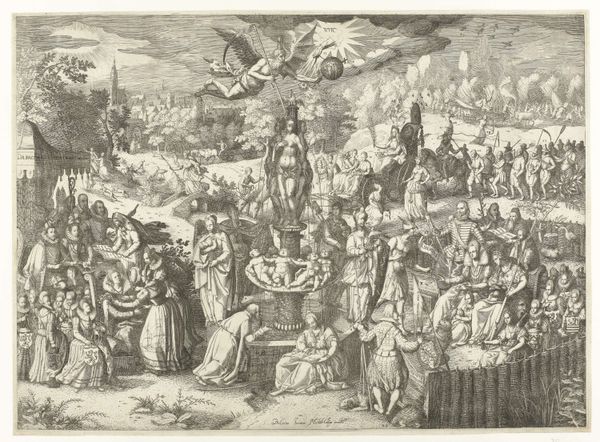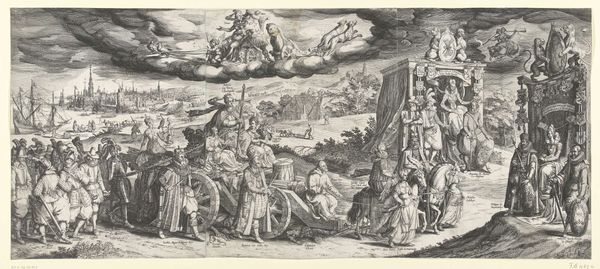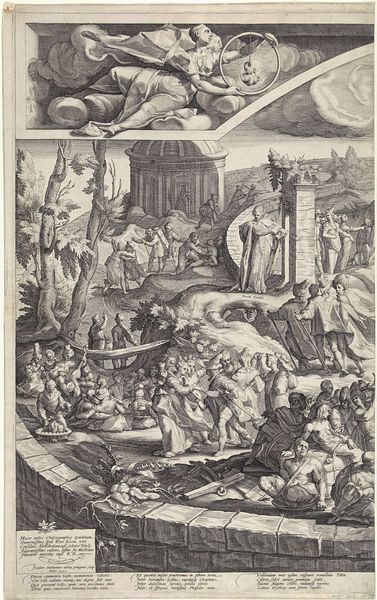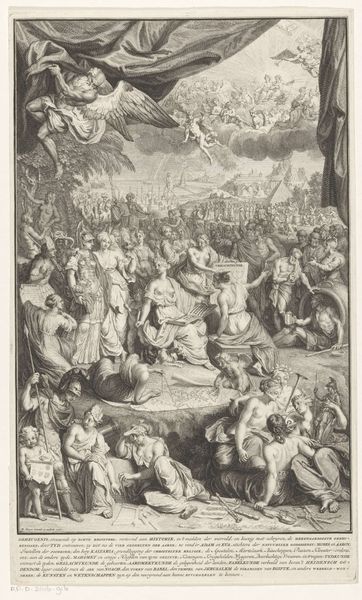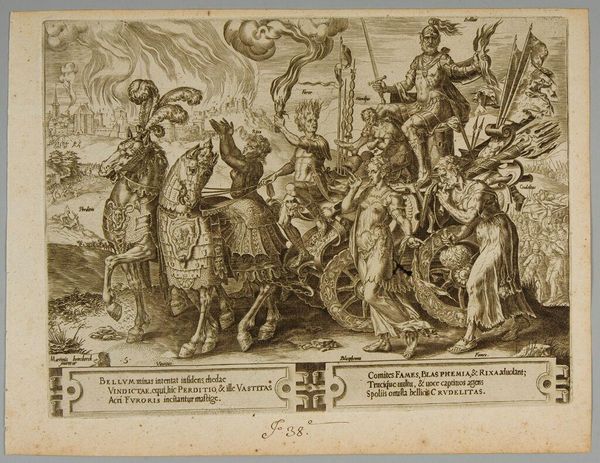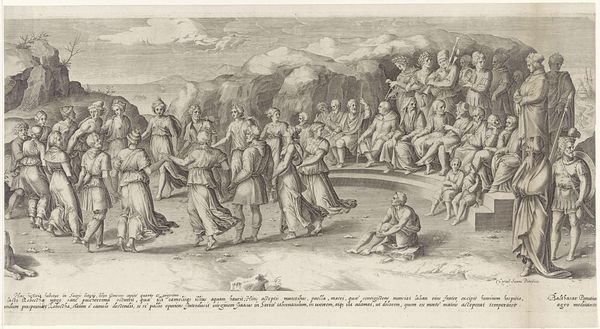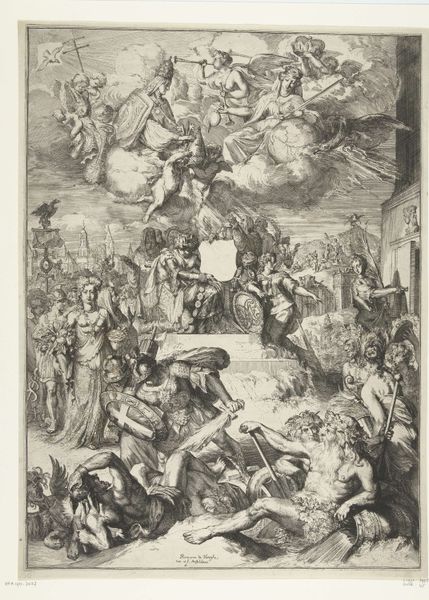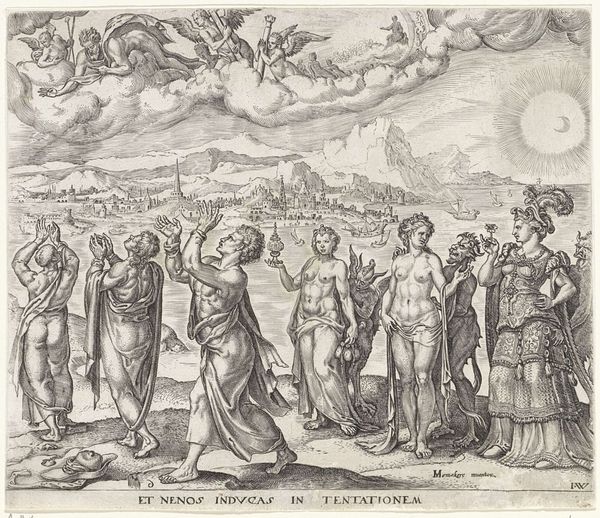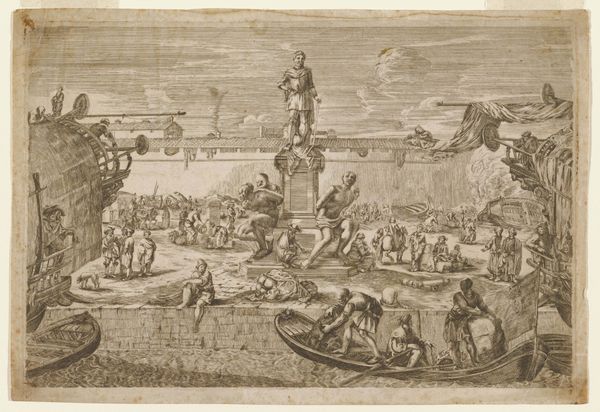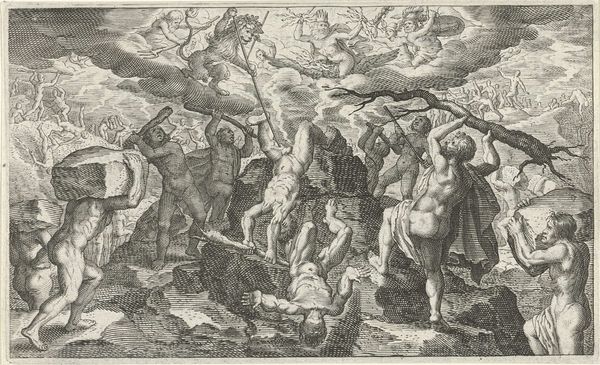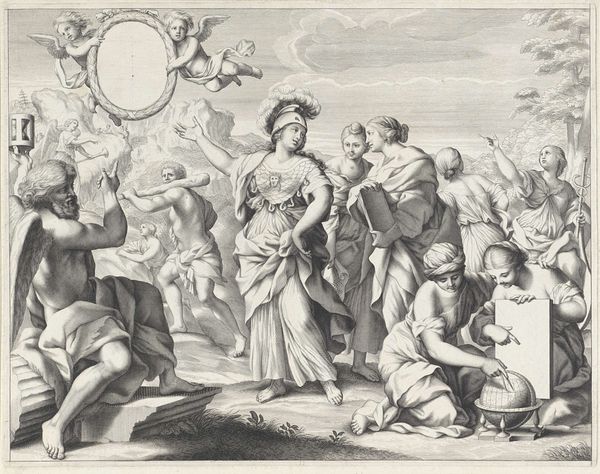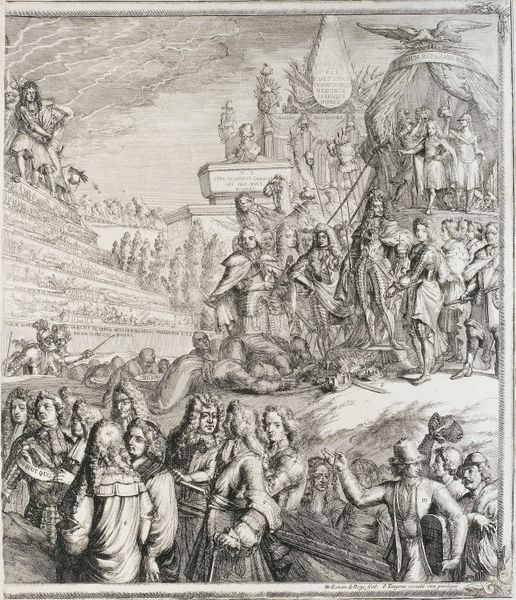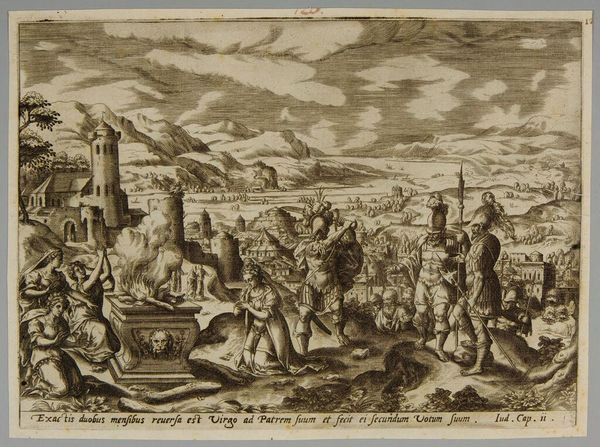
print, etching, engraving
#
allegory
#
narrative-art
#
baroque
# print
#
etching
#
figuration
#
genre-painting
#
engraving
Dimensions: height 141 mm, width 176 mm
Copyright: Rijks Museum: Open Domain
Curator: Welcome. We’re looking at a print called "Satire op het roken," created between 1624 and 1634, attributed to an anonymous artist and held at the Rijksmuseum. What strikes you first? Editor: It’s densely packed. The composition feels divided, almost like two separate scenes fighting for attention. There's a celestial realm above and an earthly one below, unified only by a falling cascade of what seem to be smoking pipes. A strange combination of playful and judgmental mood overall. Curator: Yes, there is a deliberate juxtaposition at play here. The upper register depicts classical figures – gods and personifications – seated around a table, seemingly observing the scene unfolding below. Consider how the artist used line and form. The sharp, precise lines create a sense of order in the heavens. Editor: While below, a chaotic scene of children playing amongst scattered pipes and a more refined group partaking in tobacco at a table creates a sense of debauchery. Look at their costumes, each so specific, signaling rank and privilege. It feels like the artist is drawing a moral comparison. Are we meant to view smoking as a corrupting influence witnessed by some divine power? Curator: It’s worth noting how the etching technique lends itself beautifully to this kind of allegorical work. The contrasts between light and shadow, achieved through meticulous layering of lines, emphasize the narrative's duality. Consider how the artist created distinct textures – from the soft clouds to the crisp fabric of the figures' clothing. Editor: The context of tobacco use in the 17th century is also crucial. It was a relatively new and highly contested commodity. So we have to read that into this. What roles and power structures are here? Who profits? Who is corrupted? Who gets to sit at that upper table as part of the divine system? There's an undeniably elitist view presented. Curator: Indeed, and by embedding this societal critique within a classical framework, the artist is not merely condemning smoking, but making a broader statement about morality, societal excess and fleeting human endeavors. Note the baroque sensibility – the elaborate ornamentation, the theatrical arrangement of figures… Editor: Agreed. So while the composition divides itself through formal allegorical decisions about line, what emerges from this combination of modes is not just moral panic, but also a rather savvy commentary on the shifting class anxieties within 17th-century Dutch society. A lot packed in here! Curator: Absolutely. It leaves one pondering the ephemeral nature of earthly pursuits and the judgement that might await from above.
Comments
No comments
Be the first to comment and join the conversation on the ultimate creative platform.
